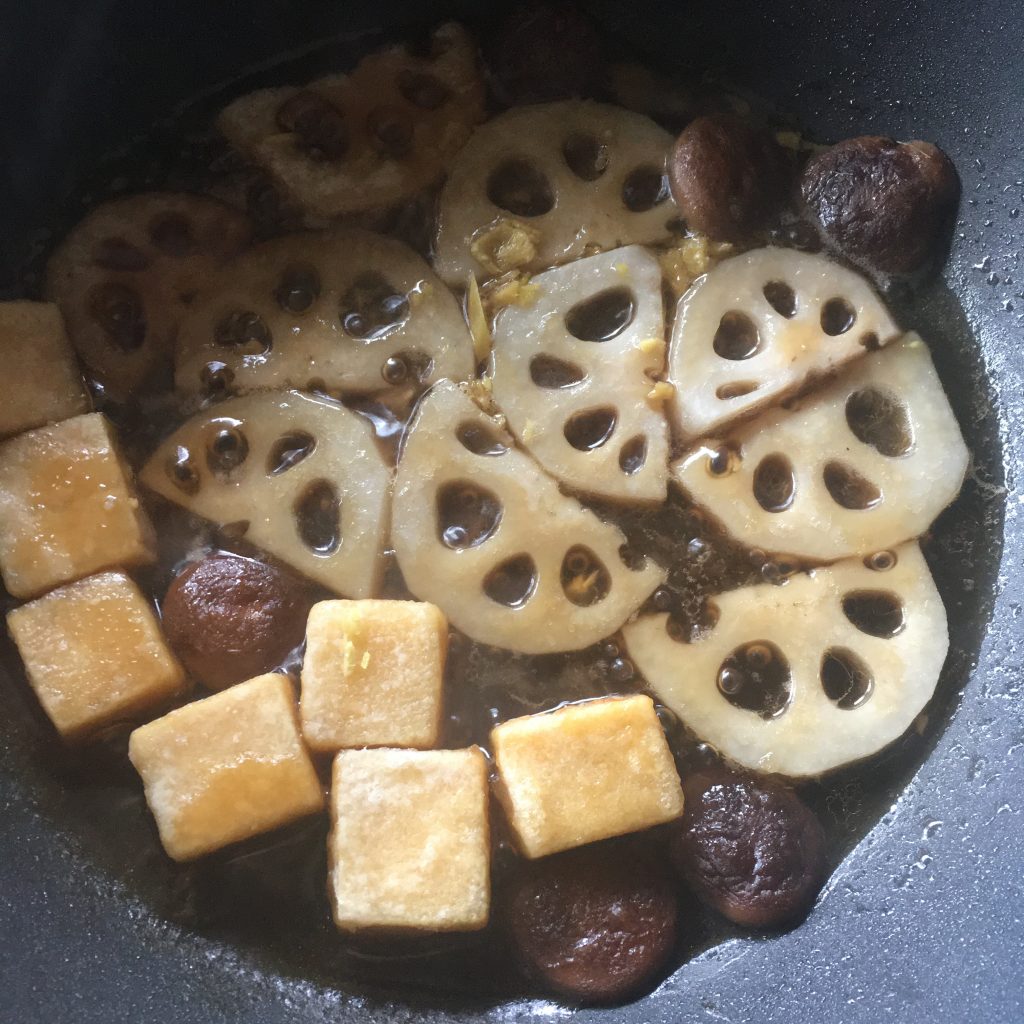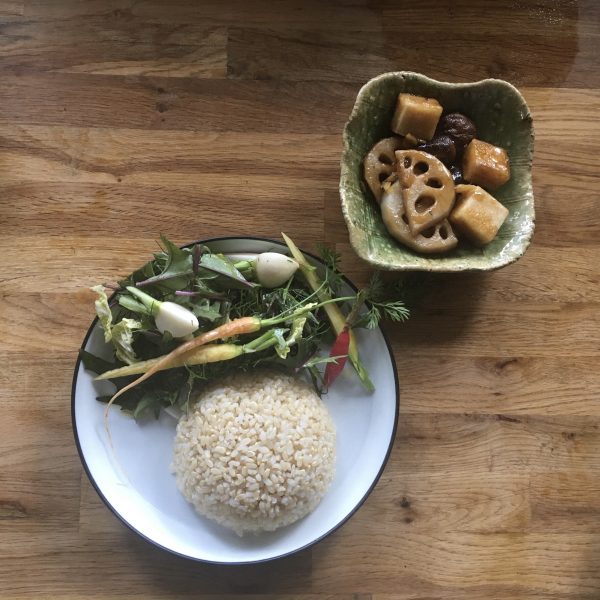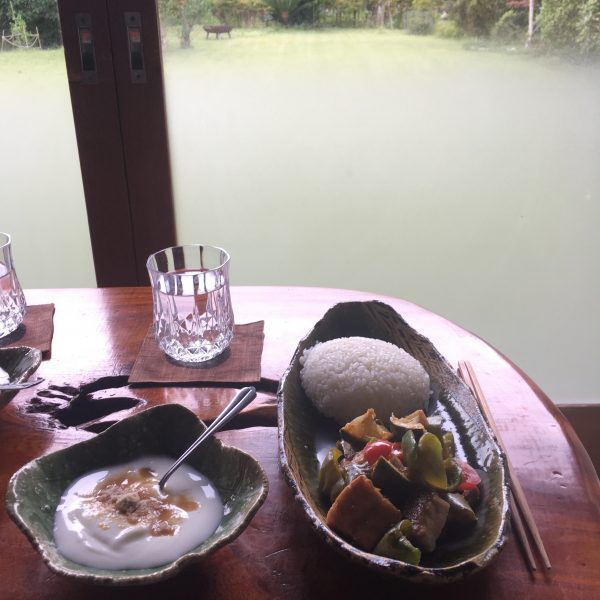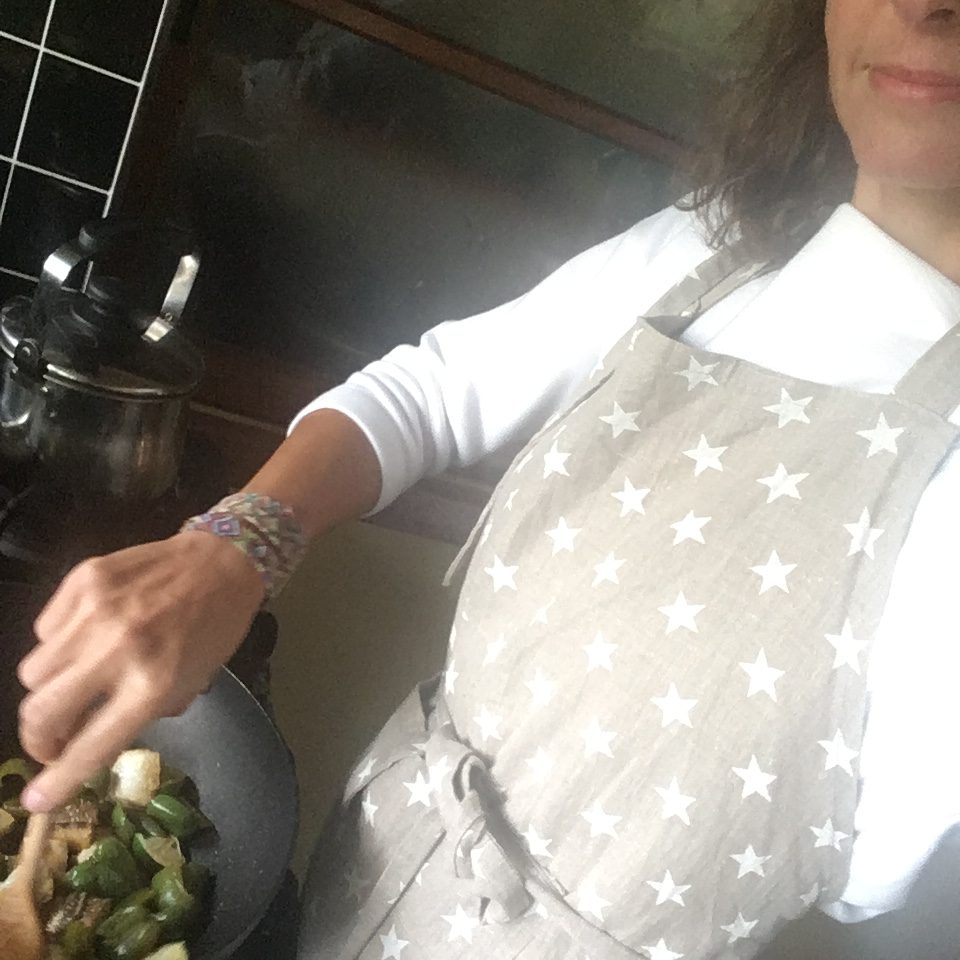You may remember that in October I introduced a very Japanese ingredient: Koyadofu-高野豆腐 in a post with a very simple recipe of curry. This was just one of the many examples of using koyadofu. Some may definitely claim that it is spongious and tasteless, I wouldn’t argue much, but I could also say that it is packed with proteins and it adds a very interesting texture to many preparations. The recipe I want to present today is a very simple recipe of Koyadofu first slightly fried and then simmered. It is basically a preparation that could be done with hard tofu as well. The vegetables I chose for the recipe are those I had around but you can also change slightly and add greens or vegetables of your choice. I must admit that lotus root and shiitake are really perfect for this preparation: the fresh shiitake are soft and a bit chewy, the renkon is crunchy, and the koyadofu just perfectly spongy, but the prior frying avoids it from sucking all the juice.
So without further delay, let me share this recipe, that is really simple but holds all the best Japanese flavours.
Simmered Koyadofu (serve 2 people as a side of rice)
- 5cm of lotus root, a bit big
- 10 cubes of 1~2cm of koyadofu. If you use large blocks of koyadofu 2 should enough
- 10 little shiitake, or 5 large
- a 1cm piece of fresh ginger
- 3tbs of soya sauce
- 3tbs of cooking sake
- 1/2 of water
- some katakuriko 片栗粉 or potato starch
- a bit of oil for frying
First of all return the koyadofu to a soft texture by bathing it into water for a few minutes. Drain well by squeezing it like a sponge. If you use large blocks cut them in 1~2 cm cubes. Roll them in the katakuriko. In a oiled and heated frypan fry the cubes until white golden.
Peel the lotus root and cut in 5~10mm slices, cut in 2 if the root is really large. Add to the pan and cook in the remaining oil. Wash the shiitake, remove the stem, cut them in 2 or 4 if large. Add to the pan. Grate the ginger, add to the pan, add the soya sauce, the sake and the water and simmer for 10min or until the liquid is almost gone. Serve with a bowl of rice for example.




